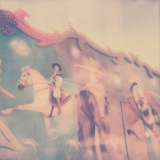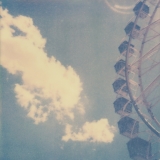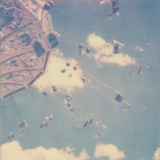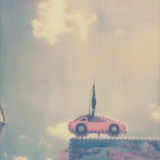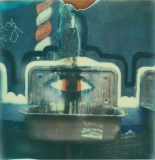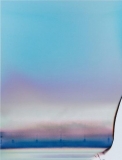Biography
Julia Thalhofer’s photography resists the expectations of an era marked by the possibilities of digital photography, where the quality of an image is determined by its technical characteristics, especially maximum clarity through high resolution. Thalhofer (born 1987) works with modern Polaroid cameras and Polaroid materials, which to a certain extent are not so different from their 1970s predecessors that have limited control over the picture-taking process. Each image can be labeled as an experiment. This manifests itself through the uncontrollable focus, as well as in “washed-out” colors that change over time due to lasting chemical reactions, in which external factors such as temperature and humidity play an important role. The instant Polaroids prints therefore represent snapshots of the ephemeral by recording the unrepeatable, transitory state of the original image.
This purely technical procedure congenially corresponds to the artist’s motifs.Thalhofer preferably seeks out locations that represent the slowly-fading, traditional Asian culture. Rather than concentrating on well-known tourist attractions, she finds completely unspectacular places and settings that still reflect an old, tranquil lifestyle and everyday culture. Due in part to the analog nature of the technology she uses, the resulting images completely raise the consciousness of the subjects, however the characteristics of the Polaroid process release the motifs from being an empirical experience. Thus the peculiar color behavior, patchy blurriness, and the indifferent contrasts move the image into the sphere of an impossible fantasy. This provides an interpretation of how another fantasy world could be truthfully perceived as a transcendent alternative design demythologized by a digitized presence. That there may be such dream worlds in nearby surroundings is proved within two of the artist’s photo series. One pays homage to the traditional rides at Munich’s Oktoberfest, while the other focuses on the omnipresence of popular religious folk culture in rural Poland. Both particular places are bound to a fundamental state of being that commercialism and mechanical obsession threaten to level.
With her critique of civilization simultaneously countering her intensely life-affirming, lyrical photography, Julia Thalhofer has already made a name for herself by becoming a recurring artist of discussion in the Süddeutsche Zeitung’s section for young readers.
Curriculum Vitae
| 1987 | born in Munich |
| 2008–2009 | Participation at the pilot project for professional orientation IMAL (International Munich Art Lab) |
| 2009–2013 | Studies of photo design, University of Applied Sciences, Munich; bachelor degree |
| 2011 | Photo assistance with Guido Pretzl, Munich; Sam Bisso, Munich; Nicolas Kantor, Berlin |
| Photo assistance and internship with Sacha Tassilo Hoechstetter, Munich | |
| 2012 | Polaroid-trip through Thailand, Laos and Malaysia |
| 2013 | Polaroid-trip through India and Nepal |
| Julia Thalhofer lives and works in Inning am Ammersee, Starnberg district, Bavaria | |
Exhibitions (S = Solo show, G = Group exhibition) |
|
| 2015 | „possible“ (E), Ingo Seufert Gallery for Contemporary Photography, Munich |
| 2014 | „Aufgeschlossen“ (G), Farbenladen im Feierwerk, Munich |
| 2013 | „Einblick“ (G), thesis for the course of design studies, Hochschule Munich |
| „Mein München“ (G), Farbenladen im Feierwerk, Munich | |
| 2012 | „PolskiBlues“ (S), Foto Augustin e. K., München |
| „Asien“ (S), Foto Augustin e. K., Munich | |
| 2011 | „Schein&Heilig“ (G), Benefizevent, 8 Seasons, Munich |
| „Facetten der Jugend“ (G), Subkultur e. V., alter Schlachthof, Fürstenfeldbruck | |
Bibliography – Selection |
|
| 2014 | Jenny Stern: „Aufgeschlossen“, jungeleute.sueddeutsche.de (4/28/2014) |
| 2013 | Marie Schoeß: „Julia Thalhofer: Oktoberfest“, sz-jugendseite.de (8/26/2013) |
| Marie Schoeß: „Julia Thalhofer: Himmel über dem Westend“, sz-jugendseite.de (7/1/2013) | |
| Marie Schoeß: „Abschluss im Quadrat“, sz-jugendseite.de (2/25/2013) | |
| 2012 | Marie Schoeß: „Julia Thalhofer: Bavaria“, sz-jugendseite.de (9/24/2012) |
| Marie Schoeß: „Julia Thalhofer: Marienplatz“, sz-jugendseite.de (6/18/2012) | |
| Marion: „Julia Thalhofer“, the-impossible.project.com (6/2012) | |
| Marie Schoeß: „Rückkehr in eine alte Welt“, sz-jugendseite.de (6/4/2012) | |
Credentials & People |
|
| Stilirium, Vincenz Lüps, Fabian Rupprecht, Missmango | |
Julia Thalhofer
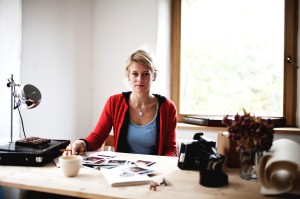
“’They didn’t know that it was impossible, so they went ahead and did it.’ This quote from Mark Twain has become my motto, since I read it on a sign along the side of the road during one of my trips through Asia. Nothing is impossible, as long as one believes and trusts in something. Shortly before, I had started documenting my travels with Polaroids. The beautiful thing about Polaroids is that each is a one-off. Each captures the moment’s own unique beauty. There are one-offs that are not meant to be conserved forever, because you cannot say with certainty how long the image will remain on the photographic material. But that’s exactly what appeals to me. Everything is transient. I see this again and again in my travels through Asia, which is why the Polaroid picture works so well there. I have found places that are more original and simpler than the world in which we live – a life without time pressure, without perfection, with a lot of humanity and imperfections. Imperfections are something very aesthetic that make things perfect for me. I want that my pictures have the power to kidnap the viewer, take them to another world, and encourage them to dream. My photographic vision is characterized by a painterly style; I am inspired by artists such as Franz Marc, Wassily Kandinsky and Henri Matisse. My flower paintings are strongly influenced by them. Even as a child I found Georgia O’Keeffe’s flower paintings unbelievably inspiring. A Polaroid comes very close to the painted image, since it does not depict reality. Instead it encourages dreaming, leaves things open, and has the effect of a sketch that cannot yet be finished.
My photographic work is not limited to Polaroids. I use digital cameras, as well as other analog cameras. I mainly use digital technology to experiment, because so much is possible. I’m open to any medium. I also think that it is very important to stay open and experiment, because only then can you create something new and express yourself artistically “ (Julia Thalhofer)
